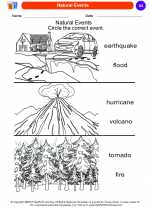Convective Motion
Convective motion is the movement of fluids (liquids or gases) caused by differences in temperature and density within the fluid. This type of motion is commonly observed in the Earth's atmosphere, oceans, and even in a pot of boiling water. Understanding convective motion is important in various scientific fields such as meteorology, oceanography, and geology.
Causes of Convective Motion
Convective motion occurs due to the uneven heating of a fluid. When a fluid is heated, it becomes less dense and tends to rise, while cooler, denser fluid sinks. This creates a circular motion known as convection. In the atmosphere, for example, the sun heats the Earth's surface unevenly, causing warm air to rise and cool air to sink, leading to the formation of winds and weather patterns.
Examples of Convective Motion
1. Atmospheric Convection: The formation of clouds, thunderstorms, and wind patterns in the Earth's atmosphere are all examples of convective motion driven by the heating and cooling of air masses.
2. Oceanic Convection: In the ocean, convective motion plays a role in the distribution of heat and nutrients, as well as the formation of ocean currents. For example, the Gulf Stream is a result of convective motion in the Atlantic Ocean.
3. Mantle Convection: Within the Earth's mantle, heat from the core causes convective motion of molten rock, leading to processes such as plate tectonics and volcanic activity.
Study Guide
Here are some key points to remember about convective motion:
- Convective motion is the movement of fluids driven by differences in temperature and density.
- It occurs in various natural systems, including the atmosphere, oceans, and Earth's interior.
- Understanding convective motion helps explain phenomena such as weather patterns, ocean currents, and geological processes.
- Convection is a fundamental process in the Earth's heat distribution system.
- Examples of convective motion can be observed in everyday phenomena, such as boiling water and the formation of clouds.
[Convective Motion] Related Worksheets and Study Guides:
.◂Science Worksheets and Study Guides Kindergarten. Weather

 Coloring Worksheet
Coloring Worksheet
 Coloring Worksheet
Coloring Worksheet
 Coloring Worksheet
Coloring Worksheet
 Coloring Worksheet
Coloring Worksheet
 Coloring Worksheet
Coloring Worksheet
 Coloring Worksheet
Coloring Worksheet
 Coloring Worksheet
Coloring Worksheet
 Coloring Worksheet
Coloring Worksheet
 Coloring Worksheet
Coloring Worksheet
 Coloring Worksheet
Coloring Worksheet
 Coloring Worksheet
Coloring Worksheet
 Coloring Worksheet
Coloring Worksheet
 Coloring Worksheet
Coloring Worksheet
 Coloring Worksheet
Coloring Worksheet
 Coloring Worksheet
Coloring Worksheet
 Coloring Worksheet
Coloring Worksheet
 Coloring Worksheet
Coloring Worksheet
 Coloring Worksheet
Coloring Worksheet
 Coloring Worksheet
Coloring Worksheet
